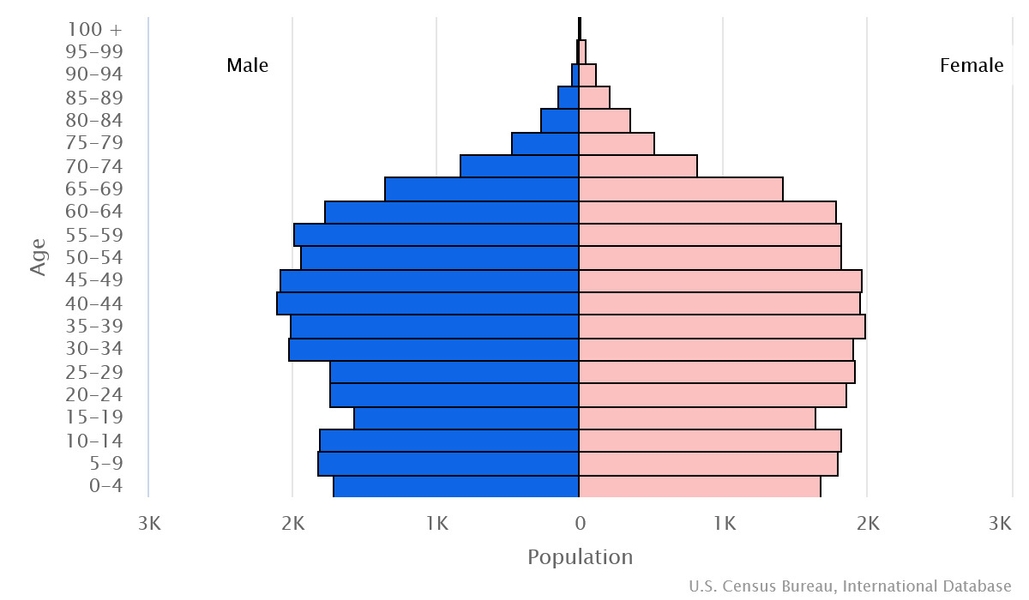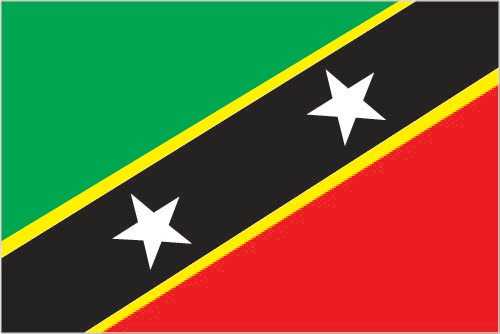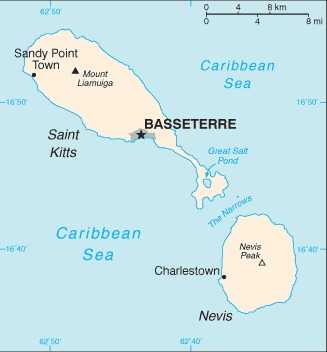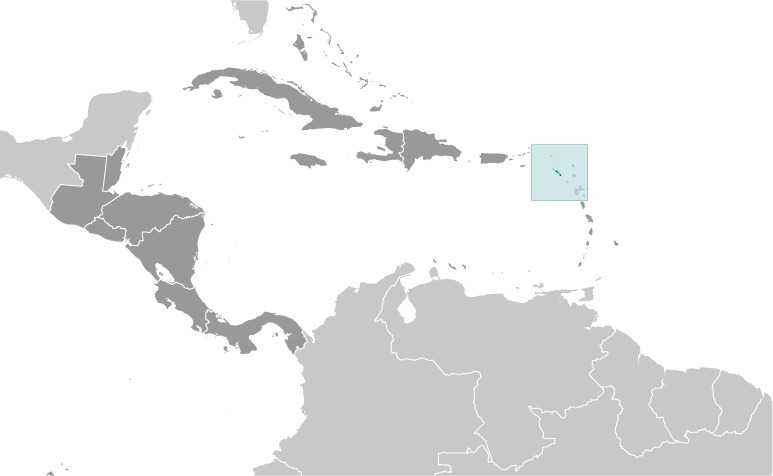Introduction
Background
Carib Indians occupied the islands of the West Indies for hundreds of years before the British and French began settlement in 1623. During the 17th century, Saint Kitts became the premier base for British and French expansion into the Caribbean. The French ceded the territory to the UK in 1713. At the turn of the 18th century, Saint Kitts was the richest British Crown Colony per capita in the Caribbean, a result of the sugar trade. Although small in size and separated by only 3 km (2 mi) of water, Saint Kitts and Nevis were viewed and governed as different states until the late-19th century, when the British forcibly unified them along with the island of Anguilla. In 1967, the island territory of Saint Christopher-Nevis-Anguilla became an associated state of the UK with full internal autonomy. The island of Anguilla rebelled and was allowed to secede in 1971. The remaining islands achieved independence in 1983 as Saint Kitts and Nevis. In 1998, a referendum on Nevis to separate from Saint Kitts fell short of the necessary two-thirds majority.
Visit the Definitions and Notes page to view a description of each topic.
Geography
Location
Caribbean, islands in the Caribbean Sea, about one-third of the way from Puerto Rico to Trinidad and Tobago
Geographic coordinates
17 20 N, 62 45 W
Map references
Central America and the Caribbean
Area
total : 261 sq km (Saint Kitts 168 sq km; Nevis 93 sq km)
land: 261 sq km
water: 0 sq km
comparison ranking: total 211
Area - comparative
1.5 times the size of Washington, DC
Land boundaries
total: 0 km
Coastline
135 km
Maritime claims
territorial sea: 12 nm
contiguous zone: 24 nm
exclusive economic zone: 200 nm
continental shelf: 200 nm or to the edge of the continental margin
Climate
tropical, tempered by constant sea breezes; little seasonal temperature variation; rainy season (May to November)
Terrain
volcanic with mountainous interiors
Elevation
highest point: Mount Liamuiga 1,156 m
lowest point: Caribbean Sea 0 m
Natural resources
arable land
Land use
agricultural land: 23.1% (2018 est.)
arable land: 19.2% (2018 est.)
permanent crops: 0.4% (2018 est.)
permanent pasture: 3.5% (2018 est.)
forest: 42.3% (2018 est.)
other: 34.6% (2018 est.)
Irrigated land
8 sq km (2012)
Population distribution
population clusters are found in the small towns located on the periphery of both islands
Natural hazards
hurricanes (July to October)
volcanism: Mount Liamuiga (1,156 m) on Saint Kitts, and Nevis Peak (985 m) on Nevis, are both volcanoes that are part of the volcanic island arc of the Lesser Antilles, which extends from Saba in the north to Grenada in the south
Geography - note
smallest country in the Western Hemisphere both in terms of area and population; with coastlines in the shape of a baseball bat and ball, the two volcanic islands are separated by a 3-km-wide channel called The Narrows; on the southern tip of baseball-bat-shaped Saint Kitts lies the Great Salt Pond; Nevis Peak sits in the center of its almost circular namesake island and its ball shape complements that of its sister island
People and Society
Population
total: 55,133
male: 27,599
female: 27,534 (2024 est.)
comparison rankings: female 207; male 207; total 207
Nationality
noun: Kittitian(s), Nevisian(s)
adjective: Kittitian, Nevisian
Ethnic groups
African descent 92.5%, mixed 3%, White 2.1%, East Indian 1.5%, other 0.6%, unspecified 0.3% (2001 est.)
Languages
English (official)
Religions
Protestant 75.6% (includes Anglican 16.6%, Methodist 15.8%, Pentecostal 10.8%, Church of God 7.4%, Baptist 5.4%, Seventh Day Adventist 5.4%, Wesleyan Holiness 5.3%, Moravian 4.8%, Evangelical 2.1%, Brethren 1.7%, Presbyterian 0.3%), Roman Catholic 5.9%, Hindu 1.8%, Jehovah's Witness 1.4%, Rastafarian 1.3%, other 5%, none 8.8%, unspecified 0.1% (2011 est.)
Age structure
0-14 years: 19.2% (male 5,314/female 5,277)
15-64 years: 68.1% (male 18,944/female 18,575)
65 years and over: 12.7% (2024 est.) (male 3,341/female 3,682)

Dependency ratios
total dependency ratio: 41.7
youth dependency ratio: 28
elderly dependency ratio: 13.7
potential support ratio: 7.3 (2021)
Median age
total: 38.6 years (2024 est.)
male: 38.8 years
female: 38.3 years
comparison ranking: total 72
Population distribution
population clusters are found in the small towns located on the periphery of both islands
Urbanization
urban population: 31.1% of total population (2023)
rate of urbanization: 1.06% annual rate of change (2020-25 est.)
Major urban areas - population
14,000 BASSETERRE (capital) (2018)
Sex ratio
at birth: 1.02 male(s)/female
0-14 years: 1.01 male(s)/female
15-64 years: 1.02 male(s)/female
65 years and over: 0.91 male(s)/female
total population: 1 male(s)/female (2024 est.)
Infant mortality rate
total: 8 deaths/1,000 live births (2024 est.)
male: 5.5 deaths/1,000 live births
female: 10.6 deaths/1,000 live births
comparison ranking: total 147
Life expectancy at birth
total population: 77.6 years (2024 est.)
male: 75.2 years
female: 80.1 years
comparison ranking: total population 89
Gross reproduction rate
0.87 (2024 est.)
Drinking water source
improved: urban: 98.3% of population
rural: 98.3% of population
total: 98.3% of population
unimproved: urban: 1.7% of population
rural: 1.7% of population
total: 1.7% of population (2015 est.)
Current health expenditure
5.4% of GDP (2020)
Physician density
2.77 physicians/1,000 population (2018)
Hospital bed density
4.8 beds/1,000 population (2012)
Sanitation facility access
improved: urban: 87.3% of population
rural: 87.3% of population
total: 87.3% of population
unimproved: urban: 12.7% of population
rural: 12.7% of population
total: 12.7% of population (2017 est.)
Alcohol consumption per capita
total: 8.84 liters of pure alcohol (2019 est.)
beer: 3.73 liters of pure alcohol (2019 est.)
wine: 1.02 liters of pure alcohol (2019 est.)
spirits: 3.89 liters of pure alcohol (2019 est.)
other alcohols: 0.21 liters of pure alcohol (2019 est.)
comparison ranking: total 36
Currently married women (ages 15-49)
57.2% (2023 est.)
Literacy
total population: NA
male: NA
female: NA
School life expectancy (primary to tertiary education)
total: 17 years
male: 16 years
female: 19 years (2015)
Environment
Environment - current issues
deforestation; soil erosion and silting affects marine life on coral reefs; water pollution from uncontrolled dumping of sewage
Environment - international agreements
party to: Biodiversity, Climate Change, Climate Change-Kyoto Protocol, Climate Change-Paris Agreement, Comprehensive Nuclear Test Ban, Desertification, Endangered Species, Hazardous Wastes, Law of the Sea, Marine Dumping-London Protocol, Ozone Layer Protection, Ship Pollution, Whaling
signed, but not ratified: none of the selected agreements
Climate
tropical, tempered by constant sea breezes; little seasonal temperature variation; rainy season (May to November)
Land use
agricultural land: 23.1% (2018 est.)
arable land: 19.2% (2018 est.)
permanent crops: 0.4% (2018 est.)
permanent pasture: 3.5% (2018 est.)
forest: 42.3% (2018 est.)
other: 34.6% (2018 est.)
Urbanization
urban population: 31.1% of total population (2023)
rate of urbanization: 1.06% annual rate of change (2020-25 est.)
Air pollutants
particulate matter emissions: 8.05 micrograms per cubic meter (2019 est.)
carbon dioxide emissions: 0.24 megatons (2016 est.)
methane emissions: 0.1 megatons (2020 est.)
Waste and recycling
municipal solid waste generated annually: 32,892 tons (2015 est.)
Total water withdrawal
municipal: 20 million cubic meters (2020 est.)
industrial: 0 cubic meters (2017 est.)
agricultural: 200,000 cubic meters (2017 est.)
Total renewable water resources
20 million cubic meters (2020 est.)
Government
Country name
conventional long form: Federation of Saint Kitts and Nevis
conventional short form: Saint Kitts and Nevis
former: Federation of Saint Christopher and Nevis
etymology: Saint Kitts was, and still is, referred to as Saint Christopher and this name was well established by the 17th century (although who first applied the name is unclear); in the 17th century a common nickname for Christopher was Kit or Kitt, so the island began to be referred to as "Saint Kitt's Island" or just "Saint Kitts"; Nevis is derived from the original Spanish name "Nuestra Senora de las Nieves" (Our Lady of the Snows) and refers to the white halo of clouds that generally wreathes Nevis Peak
note: Nevis is pronounced nee-vis
Government type
federal parliamentary democracy under a constitutional monarchy; a Commonwealth realm
Capital
name: Basseterre
geographic coordinates: 17 18 N, 62 43 W
time difference: UTC-4 (1 hour ahead of Washington, DC, during Standard Time)
etymology: the French name translates as "low land" in English; the reference is to the city's low-lying location within a valley, as well as to the fact that the city is on the leeward (downwind) part of the island, and is thus a safe anchorage
Administrative divisions
14 parishes; Christ Church Nichola Town, Saint Anne Sandy Point, Saint George Basseterre, Saint George Gingerland, Saint James Windward, Saint John Capesterre, Saint John Figtree, Saint Mary Cayon, Saint Paul Capesterre, Saint Paul Charlestown, Saint Peter Basseterre, Saint Thomas Lowland, Saint Thomas Middle Island, Trinity Palmetto Point
Independence
19 September 1983 (from the UK)
National holiday
Independence Day, 19 September (1983)
Constitution
history: several previous (preindependence); latest presented 22 June 1983, effective 23 June 1983
amendments: proposed by the National Assembly; passage requires approval by at least two-thirds majority vote of the total Assembly membership and assent of the governor general; amendments to constitutional provisions such as the sovereignty of the federation, fundamental rights and freedoms, the judiciary, and the Nevis Island Assembly also require approval in a referendum by at least two thirds of the votes cast in Saint Kitts and in Nevis
Legal system
English common law
International law organization participation
has not submitted an ICJ jurisdiction declaration; accepts ICCt jurisdiction
Citizenship
citizenship by birth: yes
citizenship by descent only: yes
dual citizenship recognized: yes
residency requirement for naturalization: 14 years
Suffrage
18 years of age; universal
Executive branch
chief of state: King CHARLES III (since 8 September 2022); represented by Governor General Marcella LIBURD (since 1 February 2023)
head of government: Prime Minister Dr. Terrance DREW (since 6 August 2022)
cabinet: Cabinet appointed by governor general in consultation with prime minister
elections/appointments: the monarchy is hereditary; governor general appointed by the monarch; following legislative elections, the leader of the majority party or majority coalition usually appointed prime minister by governor general; deputy prime minister appointed by governor general
Legislative branch
description: unicameral National Assembly (15 seats, including the attorney general; 11 members directly elected in single-seat constituencies by simple majority vote and 3 appointed by the governor general - 2 on the advice of the prime minister and the third on the advice of the opposition leader; members serve 5-year terms)
elections: last held on 5 August 2022 (next to be held on 2027)
election results: percent of vote by party - SKNLP 44.4%, PLP 16.1%, PAM 16.2%, CCM 12.7%, other 10.6%; seats by party - SKNLP 6, CCM 3, PLP 1, CCM 1; composition - men 11, women 5, percentage women 31.3%
Judicial branch
highest court(s): the Eastern Caribbean Supreme Court (ECSC) is the superior court of the Organization of Eastern Caribbean States; the ECSC - headquartered on St. Lucia - consists of the Court of Appeal - headed by the chief justice and 4 judges - and the High Court with 18 judges; the Court of Appeal is itinerant, traveling to member states on a schedule to hear appeals from the High Court and subordinate courts; High Court judges reside in the member states, with 2 assigned to Saint Kitts and Nevis; note - the ECSC in 2003 replaced the Judicial Committee of the Privy Council (in London) as the final court of appeal on Saint Kitts and Nevis; Saint Kitts and Nevis is also a member of the Caribbean Court of Justice
judge selection and term of office: chief justice of Eastern Caribbean Supreme Court appointed by His Majesty, King Charles III; other justices and judges appointed by the Judicial and Legal Services Commission, an independent body of judicial officials; Court of Appeal justices appointed for life with mandatory retirement at age 65; High Court judges appointed for life with mandatory retirement at age 62
subordinate courts: magistrates' courts
Political parties and leaders
Concerned Citizens Movement or CCM [Mark BRANTLEY]
Nevis Reformation Party or NRP [Dr. Janice DANIEL-HODGE]
People's Action Movement or PAM [Shawn K. RICHARDS]
People's Labour Party or PLP [Dr. Timothy HARRIS]
Saint Kitts and Nevis Labor Party or SKNLP [Dr. Terrance DREW]
International organization participation
ACP, ACS, AOSIS, C, Caricom, CDB, CELAC, FAO, G-77, IBRD, ICAO, ICCt, ICRM, IDA, IFAD, IFC, IFRCS, ILO, IMF, IMO, Interpol, IOC, ITU, MIGA, OAS, OECS, OPANAL, OPCW, Petrocaribe, UN, UNCTAD, UNESCO, UNIDO, UPU, WHO, WIPO, WTO
Diplomatic representation in the US
chief of mission: Ambassador Jacinth HENRY-MARTIN (since 15 September 2023)
chancery: 1203 19th St. NW, 5th Floor, Washington, DC 20036
telephone: [1] (202) 686-2636
FAX: [1] (202) 686-5740
email address and website:
stkittsnevis@embskn.com
Embassy of St.Kitts and Nevis to the USA – and Permanent Mission to the OAS (embassydc.gov.kn)
consulate(s) general: Los Angeles, New York
Diplomatic representation from the US
embassy: the US does not have an embassy in Saint Kitts and Nevis; the US Ambassador to Barbados is accredited to Saint Kitts and Nevis
Flag description
divided diagonally from the lower hoist side by a broad black band bearing two white, five-pointed stars; the black band is edged in yellow; the upper triangle is green, the lower triangle is red; green signifies the island's fertility, red symbolizes the struggles of the people from slavery, yellow denotes year-round sunshine, and black represents the African heritage of the people; the white stars stand for the islands of Saint Kitts and Nevis, but can also express hope and liberty, or independence and optimism
National symbol(s)
brown pelican, royal poinciana (flamboyant) tree; national colors: green, yellow, red, black, white
National anthem
name: "Oh Land of Beauty!"
lyrics/music: Kenrick Anderson GEORGES
note: adopted 1983
National heritage
total World Heritage Sites: 1 (cultural)
selected World Heritage Site locales: Brimstone Hill Fortress National Park
Economy
Economic overview
high-income, tourism-based Caribbean OECS economy; better debt balancing; CARICOM and ECCU member; growing offshore financial and telecommunications hub; environmentally fragile; unique citizenship-driven growth model
Real GDP (purchasing power parity)
$1.438 billion (2023 est.)
$1.39 billion (2022 est.)
$1.258 billion (2021 est.)
note: data in 2021 dollars
comparison ranking: 204
Real GDP growth rate
3.43% (2023 est.)
10.52% (2022 est.)
0.48% (2021 est.)
note: annual GDP % growth based on constant local currency
comparison ranking: 94
Real GDP per capita
$30,100 (2023 est.)
$29,200 (2022 est.)
$26,400 (2021 est.)
note: data in 2021 dollars
comparison ranking: 79
GDP (official exchange rate)
$1.077 billion (2023 est.)
note: data in current dollars at official exchange rate
Inflation rate (consumer prices)
3.56% (2023 est.)
2.67% (2022 est.)
1.2% (2021 est.)
note: annual % change based on consumer prices
comparison ranking: 70
GDP - composition, by sector of origin
agriculture: 1.1% (2017 est.)
industry: 30% (2017 est.)
services: 68.9% (2017 est.)
comparison rankings: services 77; industry 77; agriculture 196
GDP - composition, by end use
household consumption: 41.4% (2017 est.)
government consumption: 25.9% (2017 est.)
investment in fixed capital: 30.8% (2017 est.)
investment in inventories: 0% (2017 est.)
exports of goods and services: 62.5% (2017 est.)
imports of goods and services: -60.4% (2017 est.)
Agricultural products
coconuts, tropical fruits, root vegetables, vegetables, eggs, pulses, tomatoes, beef, sweet potatoes, watermelons (2022)
note: top ten agricultural products based on tonnage
Industries
tourism, cotton, salt, copra, clothing, footwear, beverages
Industrial production growth rate
-2.4% (2023 est.)
note: annual % change in industrial value added based on constant local currency
comparison ranking: 186
Remittances
3.48% of GDP (2023 est.)
3.83% of GDP (2022 est.)
4.32% of GDP (2021 est.)
note: personal transfers and compensation between resident and non-resident individuals/households/entities
Budget
revenues: $286 million (2020 est.)
expenditures: $324 million (2020 est.)
Public debt
62.9% of GDP (2017 est.)
61.5% of GDP (2016 est.)
57.67% of GDP (2014 est.)
note: central government debt as a % of GDP
comparison ranking: 71
Taxes and other revenues
15.04% (of GDP) (2020 est.)
note: central government tax revenue as a % of GDP
comparison ranking: 142
Current account balance
-$143.262 million (2023 est.)
-$105.744 million (2022 est.)
-$43.725 million (2021 est.)
note: balance of payments - net trade and primary/secondary income in current dollars
comparison ranking: 102
Exports
$577.568 million (2023 est.)
$546.373 million (2022 est.)
$389.355 million (2021 est.)
note: balance of payments - exports of goods and services in current dollars
comparison ranking: 190
Exports - partners
US 61%, India 7%, Trinidad and Tobago 5%, Germany 4%, Canada 3% (2022)
note: top five export partners based on percentage share of exports
Exports - commodities
measuring instruments, broadcasting equipment, electrical transformers, electrical control boards, ships (2022)
note: top five export commodities based on value in dollars
Imports
$674.134 million (2023 est.)
$606.301 million (2022 est.)
$407.417 million (2021 est.)
note: balance of payments - imports of goods and services in current dollars
comparison ranking: 198
Imports - partners
US 47%, Italy 9%, Turkey 6%, Trinidad and Tobago 6%, China 5% (2022)
note: top five import partners based on percentage share of imports
Imports - commodities
ships, refined petroleum, plastic products, cars, jewelry (2022)
note: top five import commodities based on value in dollars
Reserves of foreign exchange and gold
$286.075 million (2023 est.)
$293.98 million (2022 est.)
$337.533 million (2021 est.)
note: holdings of gold (year-end prices)/foreign exchange/special drawing rights in current dollars
comparison ranking: 168
Debt - external
$201.8 million (31 December 2017 est.)
$187.9 million (31 December 2016 est.)
comparison ranking: 187
Exchange rates
East Caribbean dollars (XCD) per US dollar -
Exchange rates:
2.7 (2023 est.)
2.7 (2022 est.)
2.7 (2021 est.)
2.7 (2020 est.)
2.7 (2019 est.)
Energy
Electricity access
electrification - total population: 100% (2022 est.)
Electricity
installed generating capacity: 72,000 kW (2022 est.)
consumption: 177.455 million kWh (2022 est.)
transmission/distribution losses: 39.522 million kWh (2022 est.)
comparison rankings: transmission/distribution losses 32; consumption 190; installed generating capacity 190
Electricity generation sources
fossil fuels: 97.2% of total installed capacity (2022 est.)
wind: 2.8% of total installed capacity (2022 est.)
Petroleum
refined petroleum consumption: 2,000 bbl/day (2022 est.)
Carbon dioxide emissions
272,000 metric tonnes of CO2 (2022 est.)
from petroleum and other liquids: 272,000 metric tonnes of CO2 (2022 est.)
comparison ranking: total emissions 200
Communications
Telephones - fixed lines
total subscriptions: 16,000 (2021 est.)
subscriptions per 100 inhabitants: 33 (2021 est.)
comparison ranking: total subscriptions 180
Telephones - mobile cellular
total subscriptions: 57,000 (2021 est.)
subscriptions per 100 inhabitants: 119 (2021 est.)
comparison ranking: total subscriptions 206
Telecommunication systems
general assessment: good interisland and international connections; broadband access; expanded FttP (Fiber to the Home) and LTE markets; regulatory development; telecom sector contributes greatly to the overall GDP; telecom sector is a growth area (2020)
domestic: fixed-line teledensity is 33 per 100 persons; mobile-cellular teledensity is 120 per 100 persons (2021)
international: country code - 1-869; landing points for the ECFS, Southern Caribbean Fiber and the SSCS submarine cables providing connectivity for numerous Caribbean Islands (2019)
Broadcast media
the government operates a national TV network that broadcasts on 2 channels; cable subscription services provide access to local and international channels; the government operates a national radio network; a mix of government-owned and privately owned broadcasters operate roughly 15 radio stations (2019)
Internet users
total: 37,920 (2021 est.)
percent of population: 79% (2021 est.)
comparison ranking: total 205
Broadband - fixed subscriptions
total: 30,000 (2020 est.)
subscriptions per 100 inhabitants: 56 (2020 est.)
comparison ranking: total 154
Transportation
Heliports
1 (2024)
Railways
total: 50 km (2008)
narrow gauge: 50 km (2008) 0.762-m gauge on Saint Kitts for tourists
comparison ranking: total 133
Merchant marine
total: 341 (2023)
by type: bulk carrier 22, container ship 16, general cargo 85, oil tanker 59, other 159
comparison ranking: total 53
Ports
total ports: 2 (2024)
large: 0
medium: 0
small: 0
very small: 2
ports with oil terminals: 2
key ports: Basseterre, Charlestown
Military and Security
Military and security forces
Ministry of National Security: St. Kitts and Nevis Defense Force (SKNDF), St. Kitts and Nevis Coast Guard, the Royal St. Christopher and Nevis Police Force (2024)
note: the Nevis Police Force includes the paramilitary Special Services Unit
Military and security service personnel strengths
less than 500 active personnel (2023)
Military equipment inventories and acquisitions
the SKNDF is lightly armed with equipment from Belgium, the UK, and the US (2023)
Military service age and obligation
18 years of age for voluntary military service for men and women (under 18 with written parental permission); no conscription (2023)
Military - note
SKNDF's missions included defense of the country's territorial integrity and sovereignty, protecting natural resources, interdicting narcotics trafficking, and providing humanitarian relief as needed
St. Kitts joined the Caribbean Regional Security System (RSS) in 1984; RSS signatories (Antigua and Barbuda, Barbados, Dominica, Grenada, Guyana, Saint Lucia, and Saint Vincent and the Grenadines) agreed to prepare contingency plans and assist one another, on request, in national emergencies, prevention of smuggling, search and rescue, immigration control, fishery protection, customs and excise control, maritime policing duties, protection of off-shore installations, pollution control, national and other disasters, and threats to national security (2024)
Transnational Issues
Illicit drugs
a transit point for cocaine and marijuana destined for North America, Europe, and elsewhere in the Caribbean; some local demand for cocaine and some use of synthetic drugs



